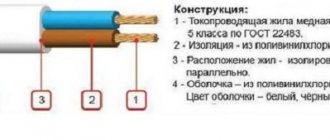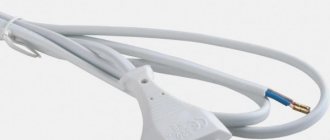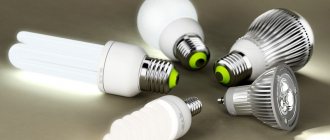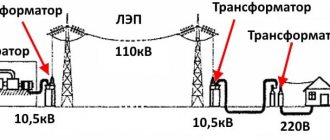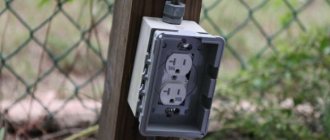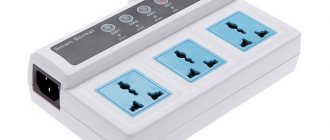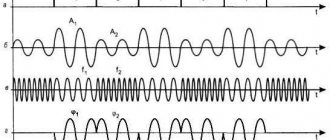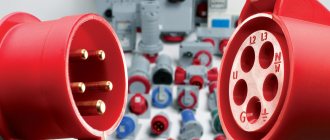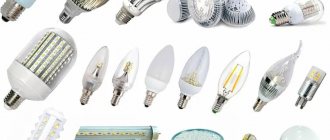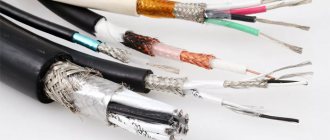January 10, 2022 Electronics kmelectric
The average person, if he hears about the RJ45 connector, will most likely say that he does not know what we are talking about. But in fact, almost everyone is familiar with this element. It is no coincidence that the connector has the abbreviation RJ. It can be deciphered as “registered jack” - registered connector. Today it is used quite widely. Note that there are a large number of RJ connectors. But in this publication we will talk exclusively about the 45th. It is important to indicate the second name of this connector - 8p8c. This name reflects the very essence of the connector - 8 places for conductors and 8 knives.
In everyday life, the RJ45 connector is often used to connect a computer to the Internet. Connecting an Internet outlet can be done independently. But do not forget that without specialized equipment, crimping a twisted pair cable is quite problematic.
Design features
Despite the variety of types of twisted pair sockets, their design is almost identical, with the exception of small details. As an example, let's look at a typical external single-port device.
Rice. 1. Basic elements of an external RJ-45 socket
Designations:
- A – plastic cover.
- B – base.
- C – functional board with a standard connector installed on it.
- D – convectors for connecting twisted pair cables.
- E – tie for fixing the cable.
- F – connector for connector.
Externally, the socket resembles an RJ-11 telephone standard; the main difference is the number of connector pins, there are eight of them, not four. Accordingly, a computer socket can be used as a telephone socket, but not vice versa.
Different types of devices may have minor characteristic features, but the overall design concept remains the same.
Twisted pair crimping circuits
During crimping, the cores should be in the following order:
Twisted pair crimp circuit
- light red (b-o) - b-o;
- red (o) - about;
- light green (b-z) - b-z;
- blue © - s;
- light blue (b-s) - b-s;
- green (h) - h;
- light brown (b-k) - b-k;
- brown (k) - k.
Types and characteristics
The main parameters of these switching devices are determined by the following criteria:
- Number of ports.
- Category.
- Execution.
Let's briefly talk about each of them.
More doesn't mean better.
One of the main parameters is the number of ports. As a rule, there can be from one to four. If you need to use a larger number of connections, it is easier to install a patch panel, but such a need indicates an ill-conceived network layout. In addition, it should be taken into account that a large number of patch cords connected nearby causes some inconvenience.
Rice. 2. Krauler 4-port external socket
In practice, when organizing an office or home LAN, one and two-unit modules are mainly used.
Category.
This parameter is directly related to the characteristics of the cable used to install the computer network. We are talking about bandwidth, which determines both the data transfer speed and the ability to use special network technologies. Below is a table that shows the relationship between category and bandwidth.
Dependence of cable technical parameters on its category
Currently, when installing a LAN, cables with a category lower than 5e are practically not used.
It should be taken into account that the category of the outlet must be no less than that of the cable being connected, otherwise there is a high probability of losses, which will negatively affect the transmission speed.
Execution.
The method of mounting the switching device depends on this parameter. There are two versions:
- for external (external) installation (such sockets are shown in Figures 1 and 2);
- for indoor installation.
Internal two-port RJ-45 socket disassembled and assembled
As a rule, the choice of one or another version depends on how the LAN wiring is done. If it is external (for example, laid in boxes), external sockets are used. In cases where hidden wiring is done, the internal devices look more aesthetically pleasing.
Separately, it is necessary to highlight the sockets that are installed directly on the box. Technically, such execution can be considered both internal and external.
Double RJ-45 socket mounted on a box
The technical characteristics of the LAN are not affected by the execution.
Modular designs.
Speaking about performance, we cannot fail to mention modular designs. This solution allows you to assemble a socket in a standard case for a specific combination, for example, install it in RJ-45 and RJ-11 modules or with different categories.
Modular socket
Basic mistakes
Unwinding of the twisted pair by more than 13 mm is not allowed.
Installation of the rg 45 socket is not difficult if done carefully. But there are a number of mistakes that experts make more often than others.
- Failure to comply with connection standards. If the device does not work and problems appear, you need to check compliance with the labeling. This is the most common mistake and solves about 90% of connection problems.
- Cutting off the cores before closing the lid. If you cut off excess parts before the cover has been installed, the wires may fall out. In this case, you will have to repeat the installation procedure.
- Stripping of insulation more than 13 mm. Large uninsulated parts of the cores lead to a drop in transmission speed and deterioration in signal quality.
Installing an Internet outlet yourself is not difficult. It is only important to follow the connection instructions and follow all steps carefully and carefully.
RJ-45 pinout
There should be no problems with this, since opposite each contact group there is a color marking that complies with the T568A and T568B standards (can be marked with the letters “A” and “B”, as in the figure below).
Markings for the T568A standard are circled in red, T568B are circled in blue.
It doesn’t matter which standard is used, the main thing is that it is the same type for the LAN, otherwise problems are guaranteed. It is believed that we have adopted a “crimp” type T568B, but this is a rather conditional statement.
If you do not know which standard your provider uses, then you can install it using the pinout of the connector installed on the cable entering the apartment.
RJ-45 connector pinout
Crimping techniques
Each twisted pair cable has four colors. The pair has a conductor filled with a solid color and mixed with white. The palette is as follows - white-orange and orange, white-green and green, white-blue and blue, white-brown and brown.
Depending on the device connection parameters, different color options are used. That is, at one end of the cable there should be one pattern, at the other - another, or the same one, as will be shown below.
For example, when connecting a computer and a hub, the following color markings must be observed:
- White-orange - white-orange.
- Orange is orange.
- White-green - white-green.
- Blue - blue.
- White-blue - white-blue.
- Green is green.
- White-brown - white-brown.
- Brown - brown.
That is, color to color. And if you need to connect two computers or hubs, a special color scheme is used, which is commonly called “cross”:
As you can see, many colors have only slightly changed their location. The brown and blue pairs remained in their places, but the orange and green pairs changed.
By the way, many modern devices have learned to determine the placement of pairs automatically, which is undoubtedly convenient when creating large networks.
Detailed connection instructions
Let's start with the tool that you will need to seal twisted pair sockets. Ideally, it is advisable to purchase a universal extractor (shown in Figure 9). It allows you to press and cut the rest of the wire in one movement. Thanks to Chinese manufacturers, such a universal tool costs about 3-4 dollars. The price of branded products can be 2-3 times more expensive.
Rice. 9. Universal extractor
This tool has a special mechanism that allows you to press the wire between two contact knives and cut off its excess (3 in Fig. 9). In addition, it is equipped with a flat screwdriver (2) and a hook (1), which allows you to remove the wire if it is incorrectly terminated. The cost of a universal extractor is relatively low, but the benefits are quite tangible.
No less useful are universal insulation stripping pliers. They cost about the same as an extractor and can cut Ø3.5-9 mm cables such as UTP, STP, FTP. It is possible to adjust the depth of the cut.
Universal stripping pliers
It is not advisable to use a knife to strip the insulation, since in this case there is a high probability of damaging one of the twisted pair wires.
Having dealt with the necessary tools, let's move on to the algorithm for embedding a twisted pair cable into a switching device. We will assume that the cable has already been laid and the outlet space has been prepared. The procedure is as follows:
- Using universal pliers, cut off the outer insulation layer from the end of the wire. It is enough to expose 4-5 centimeters. You need to act carefully so as not to damage the wires. If this happens, trim the damaged area, adjust the depth of the cut and repeat the operation.
- After removing the insulation, level each pair. Please note that there is no need to clean them. Each pad contact has special micro knives that cut the insulation and ensure reliable contact and fixation of the wire.
- We disassemble the socket. To do this, remove the front panel. To do this, you will need to unscrew the fixing screw or unfasten special latches (depending on the design). If you are using a modular socket, you will need to remove the modules from it.
- We fix the cable on the module using a tie (E in Fig. 1) or another method provided by the design.
- We insert the wires into the clamps, and it is necessary to adhere to the color markings of the selected standard. Do not try to recess the veins deeply; it is enough to simply fix them with a little force (A Fig. 11).
- Using an extractor, we perform pressing (B in Fig. 11).
Rice.
11. A – cable with wires routed through clamps, B – pressing with an extractor. At this stage, we will make a small digression regarding the use of improvised means for pressing. Sometimes you can find advice in which, in the absence of the necessary tool for pressing, it is recommended to use a utility knife or a thin slotted screwdriver. This approach can only be used as a last resort, when access to the network is urgently needed, but there is no tool at hand. But in the future, such a socket must be clamped. Otherwise, there is a high probability of losing contact between the wire and the latch after some time.
We also note that many branded manufacturers include a simple plastic extractor for each socket, which allows you to securely seal the wire, after which all that remains is to carefully trim off the excess.
- After pressing, the module is installed in place. If the socket is external, then its base is screwed to the prepared area, so that the cable is supplied from above, and the connector is from below. When installing an internal socket, its base is installed in a prepared glass and fixed in it.
- We fasten the front panel and then check its functionality. This can be done using a special tester, but it’s easier to connect a computer and check for a network connection. If problems arise, first of all check the correctness of the pinout; as practice shows, in 90% of cases the reason lies precisely in this.
Installation of connectors
To install the connector, special equipment is required - crimping pliers. It greatly simplifies the work with the connector and improves the quality of the connection. You also need the cable itself (twisted pair), scissors for cutting wires and stripping insulation.
Connection technology:
- The outer sheath is removed from the edge of the cable (approximately 2-2.5 cm).
- The twisted wires must be untwisted and placed in the correct order according to diagram A or B.
- The wires are cut to a length of 1.2 cm.
- Each wire is inserted into the connector (RJ45) until it stops.
- The connector is inserted into the press jaws and crimped.
At AVS Electronics you can purchase any cable products and SCS. We work in all regions of Russia and CIS countries. Wholesale and retail supplies for legal entities and individual entrepreneurs. Delivery of goods - pick-up from the Putilkovo warehouse. If the order amount is more than fifty thousand rubles, we will deliver the order free of charge within the Moscow Ring Road or to the transport company terminal.
Some useful tips
When using a shielded cable, you must install an appropriate socket that has a shield connection. Otherwise, it turns into a large antenna, which will immediately affect the bandwidth, and, consequently, the data transfer speed. For the same reason, you should not use an STP or FTP cable if ungrounded equipment is connected to it.
Twisted pair LAN technology requires the use of continuous lines. Twists and adhesions are unacceptable; this leads to serious losses. If it becomes necessary to extend a piece of cable, special connectors should be used for this purpose.
Rice. 12. Twisted pair connectors
These devices are a box in which a board is installed with two RJ-45 connectors (A in Fig. 12), or twisted pair clamps, like sockets (B in Fig. 12).
It is not recommended to use sockets with more than two ports in domestic conditions. A large number of patch cords in one place will cause them to become tangled. It is better to space the sockets some distance apart.
Why choose Gigabit Ethernet?
If we look at the evolutionary history of the Ethernet protocol, it becomes clear that there is a significant improvement in speed that occurs with each new generation. Based on the speed and throughput of the equipment, the obvious choice for use in a modern project would be Gigabit Ethernet. When it comes to different environments, let's say choosing Wi-Fi as the data channel to avoid the need for cables, there will definitely be some advantages and disadvantages compared to Ethernet, as can be seen in the following examples:
